
 Image: Michael Crider/Foundry
Image: Michael Crider/Foundry
At a glance
Expert’s Rating
Pros
Rapid, clicky ABXY buttons and D-padTons of programmable buttons Media controls
Cons
Expensive Hard to adjust triggersNo swappable D-pad
Our Verdict
The Scuf Envision Pro might be the best PC-focused controller for fighting fans and others who like precise, rapid inputs, but more general players might not like its side buttons and harder customization.
Price When Reviewed
$179.99
Best Prices Today: Scuf Envision Pro PC controller
RetailerPrice $179.99View DealCorsair Scuf$179.99View DealPrice comparison from over 24,000 stores worldwideProductPricePrice comparison from Backmarket
$179.99View DealCorsair Scuf$179.99View DealPrice comparison from over 24,000 stores worldwideProductPricePrice comparison from Backmarket
Despite being a bigger gaming market than all three major game consoles combined, PC gaming always seems to be chasing behind them in terms of controllers. Maybe it’s the fact that the controller is so standard for consoles, but PC gamers almost never get one that’s just for us, especially among high-end designs. Scuf, and its new owner Corsair, is trying to remedy that situation with the Envision.
This is a controller made for the PC from the ground up, with more advanced media controls baked in and a ton of extras and customizable options. It’s also decidedly premium: At $180 for the wireless “Pro” version, it’s competing directly with the de facto premium standard, Microsoft’s own Xbox Elite controller.
Is it better? That rather depends on what you want. While the Envision demonstrates careful design and in some ways more flexibility than the Elite, it’s also made some divergent design decisions that won’t be everyone’s cup of tea. I’d say that the Envision is a better choice if you value rapid, twitchy input, while the Elite is still my go-to for all-around gaming from a single controller.
Design
You might have expected Scuf to recycle one of its existing high-end controller designs for this exclusive PC outing. Not so: The Envision is an entirely new product and shape, fusing some of the elements of controllers for both the Xbox and PlayStation. Most notably, and most distinctly from its PC-focused competition, it uses parallel analog sticks in the PlayStation style, with the D-pad closest to hand (if you’ll pardon the pun) for your left thumb.
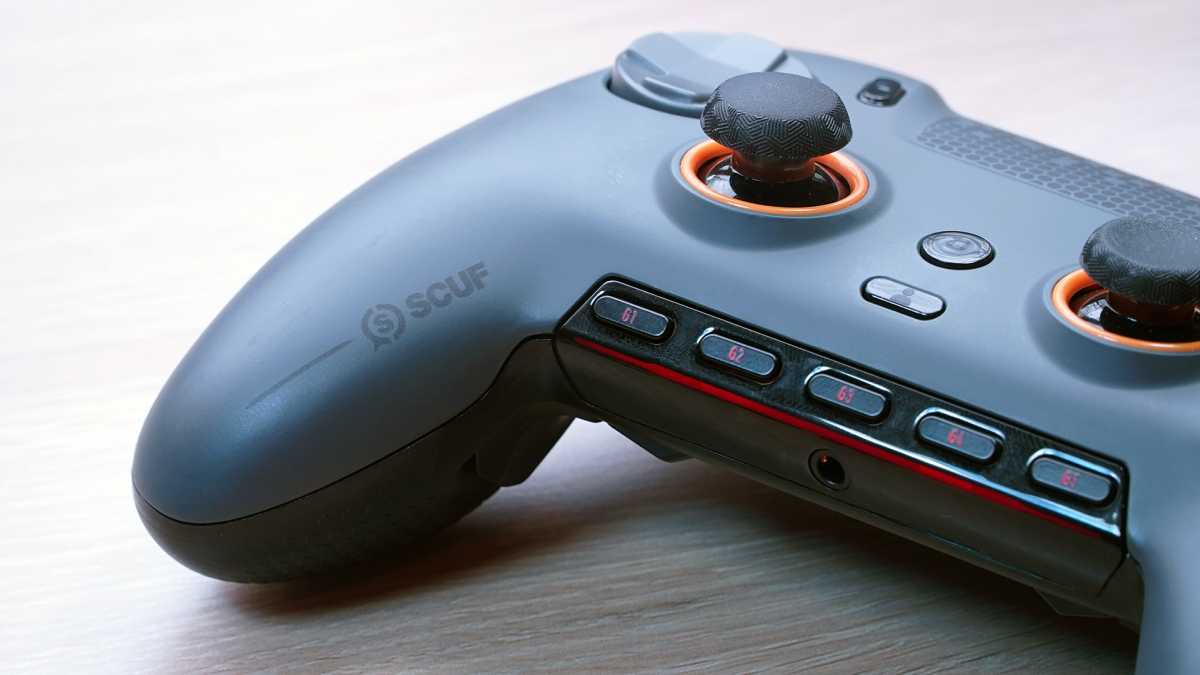
Michael Crider/Foundry
Michael Crider/Foundry
Michael Crider/Foundry
Otherwise the controller is familiar to anyone who’s tried out the recent crop of “elite” controllers, with standard ABXY face buttons, easy-to-reach modifiers for Start and Select (or whatever Microsoft is calling those buttons now), and triggers and shoulder buttons for your index finger. You also get four rear-mounted “paddles,” though they’re far less paddle-like than on the Xbox Elite, being molded directly into the plastic. I tended to hit them with my ring fingers, rocking either up or down, instead of keeping both ring and pinky on the individual buttons.
The Elite also boasts a third pair of extra programmable buttons, these resting on the side of the handles just lateral to the L1 and R1 shoulder buttons. These default to simply replicating the shoulder button functionality. They’re a unique addition that I wasn’t very fond of — more on that later.
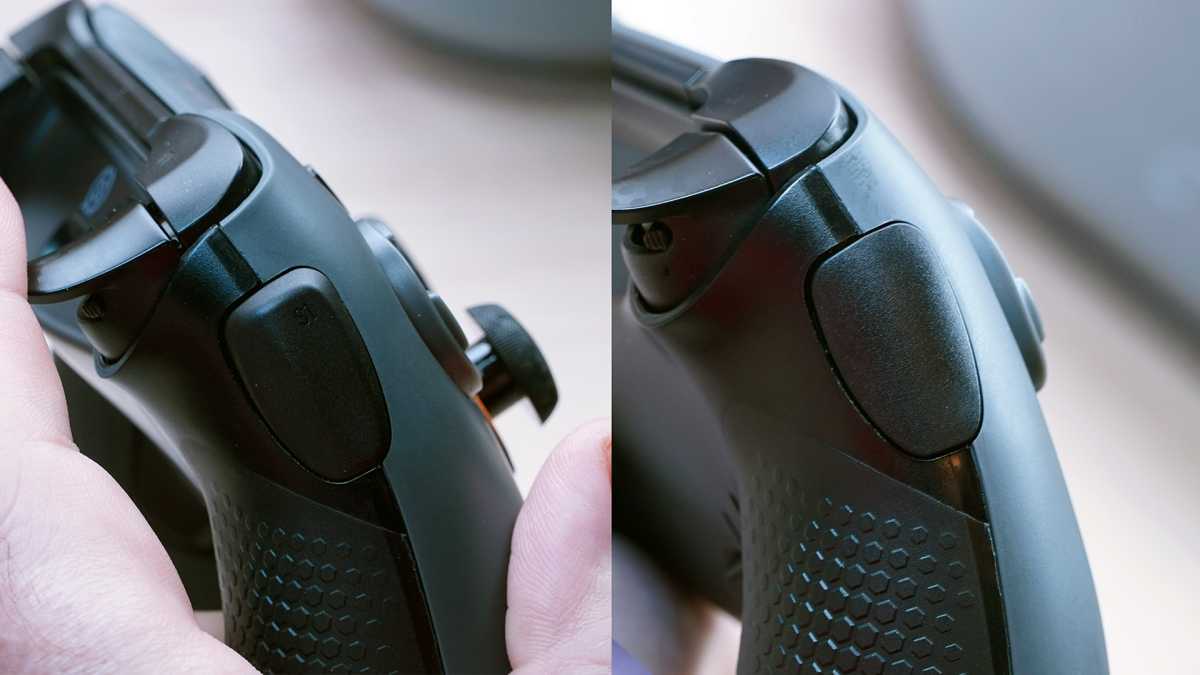
I found these side buttons more distracting than useful. Fortunately Scuf infludes blank inserts to disable them.
I found these side buttons more distracting than useful. Fortunately Scuf infludes blank inserts to disable them.
Michael Crider/Foundry
I found these side buttons more distracting than useful. Fortunately Scuf infludes blank inserts to disable them.
Michael Crider/Foundry
Michael Crider/Foundry
Finally, beneath the power and wireless pairing buttons, you get five extra “G-keys.” These default to, from left to right: Mic mute, volume down, volume up, mute, and “eco mode” which disables vibration and lighting. Oh yes, there are RGB lights on the controller, though only on these five buttons and in a strip right below them. In terms of pure functionality, they remind me of the Xbox One headset adapter, though that isn’t needed for this since there’s a ⅛ headphone jack down there, too.
Also in the box
Like the Xbox Elite Wireless, the Scuff Envision Pro includes a few extras in the box. You get two alternative thumbsticks, both with convex (outward-bubble) curves, one of which is a little longer than the other. Pop the controller’s old-school Nokia-style faceplate off, and you can place either one in either position. You also get blanks for the side buttons and the top or inner-most rear paddles (along with a removal tool), if you’d prefer not to engage with them.
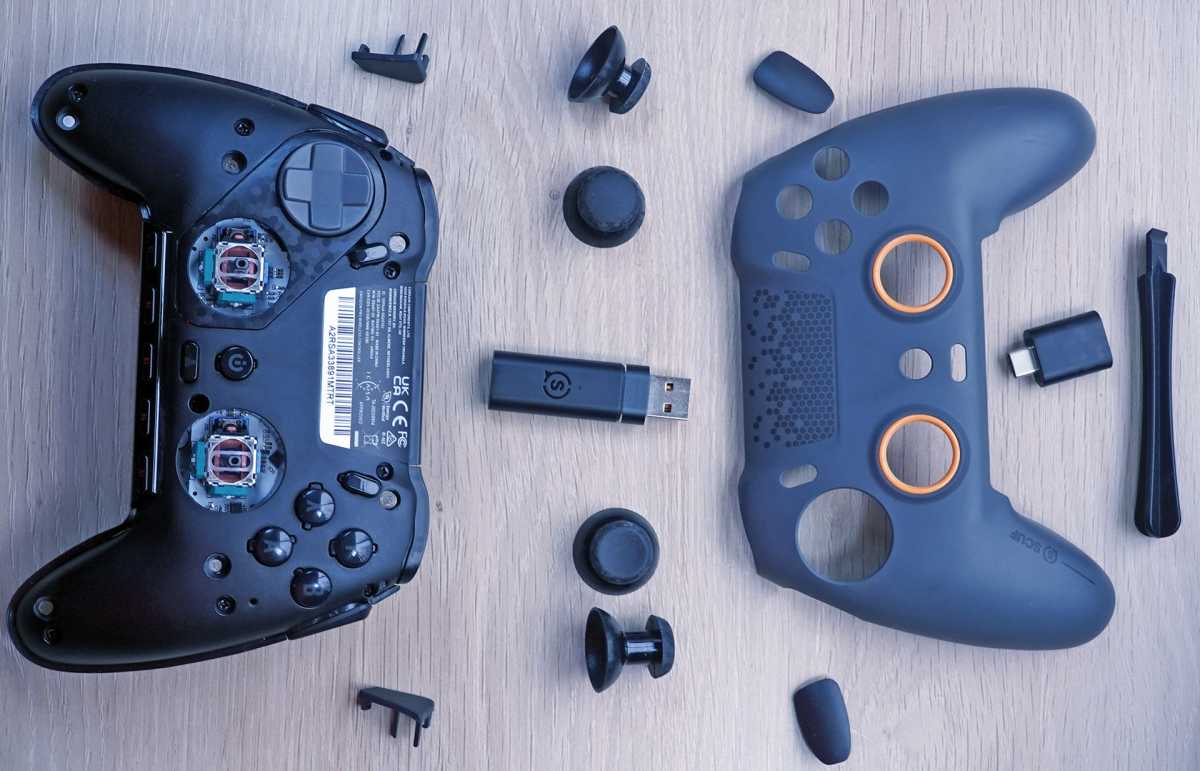
Michael Crider/Foundry
Michael Crider/Foundry
Michael Crider/Foundry
On top of that you get a USB-C charging cable with a Type A adapter, and of course, the wireless dongle, Type A only. It’s worth noting that the standard, wired-only Envision does not get the extra thumbsticks.
Comparing the Envision Pro to the Xbox Elite in terms of add-ons for the $180 package leaves the Scuf package a bit wanting. The Xbox’s top-end configuration also includes removable rear paddles and replacement thumbsticks, but its alternatives feel more solid being made out of metal. The Xbox’s sticks can also have their physical tension adjusted.
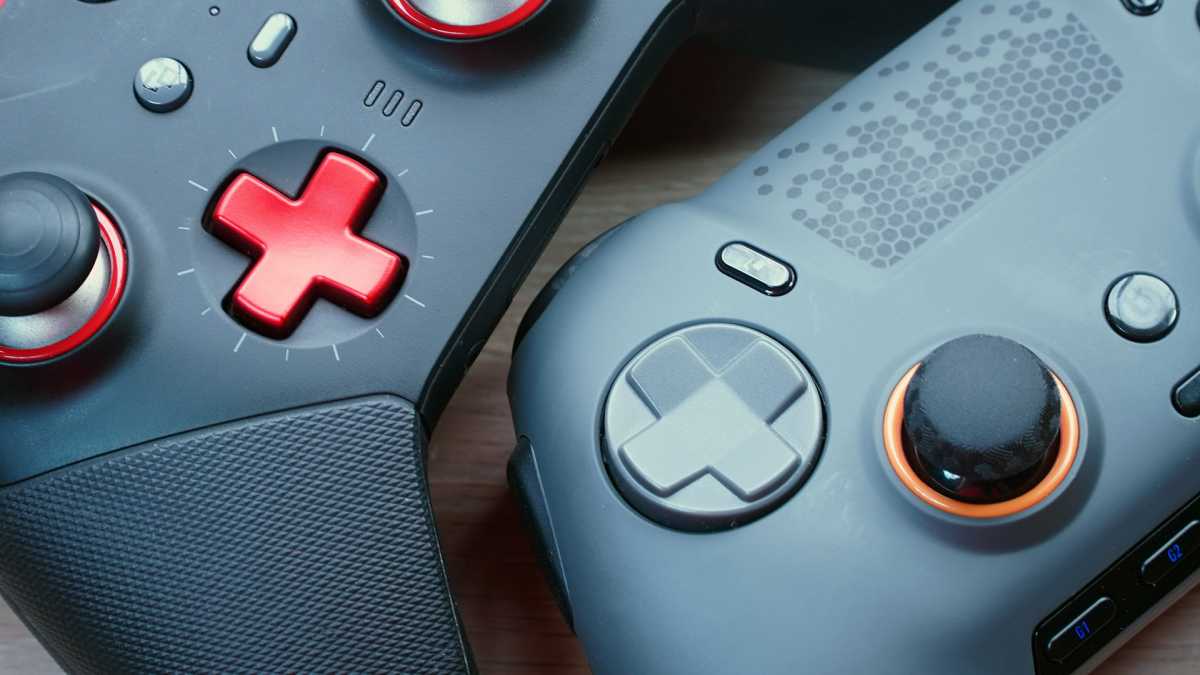
Michael Crider/Foundry
Michael Crider/Foundry
Michael Crider/Foundry
The Scuf controller’s D-pad is not removable or replaceable like the Xbox’s, which seems like a big miss, considering how contentious gamers can be in preferences for traditional cross- or circle-shaped pads. And finally, Microsoft includes a very nice carrying case at this price, while Corsair asks you to cough up an additional $15 for the privilege.
Using the Envision
The biggest adjustment for switching to the Envision was moving to the PlayStation-style parallel thumb sticks. But at this point, the extra little reach for my thumb is something I’m used to, so I wouldn’t say it’s a big deal. It’ll be a deal-breaker for some, I’m sure, and they might want to look into the Thrustmaster Eswap, or just look for a more standard Xbox-style layout.

Michael Crider/Foundry
Michael Crider/Foundry
Michael Crider/Foundry
The other big change was the ABXY face buttons. These come with short and stiff Omron switches, and pressing them was much closer to clicking a mouse than pressing a standard controller button. It’s a bit uncomfortable if you tend to mash your buttons like me, but they’re absolutely faster and more responsive than anything I’ve tried before. They’re much better for rapid combination inputs in action and fighting games. Once I learned to ease back on the pressure, I was impressed at how much faster I could quickly repeat actions.
The D-pad has similarly fast, clicky switches underneath each cardinal direction. Again, I can see this being a big win for fans of old-school fighting games and brawlers, where extremely precise and fast input can be the difference between win and a loss. If you like your buttons short, loud, and super-responsive, you’ll love the Envision.

Michael Crider/Foundry
Michael Crider/Foundry
Michael Crider/Foundry
The shoulder buttons and triggers are another matter. While I found them about as functional as their counterparts on the Elite, if a little shorter, the trigger adjustment lever is recessed deep into the triggers themselves. This makes it impossible to adjust them on the fly — you need to stop, flip the controller over, and hook a fingernail in there to actually adjust them. While I appreciate the extra adjustment options, I prefer being able to hit that adjustment without needing to pause my game.
The extra paddles are likewise a mixed bag. I really like the rear paddles, as my ring finger rests in a hollow between them and you can hit them with a sort of rocking motion up or down. They’re far easier to distinguish than the Xbox Elite’s metal paddles, and I tend to remove one set for this reason. But The Scuf didn’t have this issue.

Michael Crider/Foundry
Michael Crider/Foundry
Michael Crider/Foundry
The side “bumpers” are another matter. I found them superfluous, often accidentally tapping them with the fleshy part of my index finger between my first and second knuckles. After a few days of testing, I made use of the included blank plastic to simply shut down their functionality, and this worked fine. But it did impact the otherwise very comfortable design of the Envision. I think some pros (again, maybe fighting game fans) could make use of these buttons, but they need to be considerably more dextrous than me.
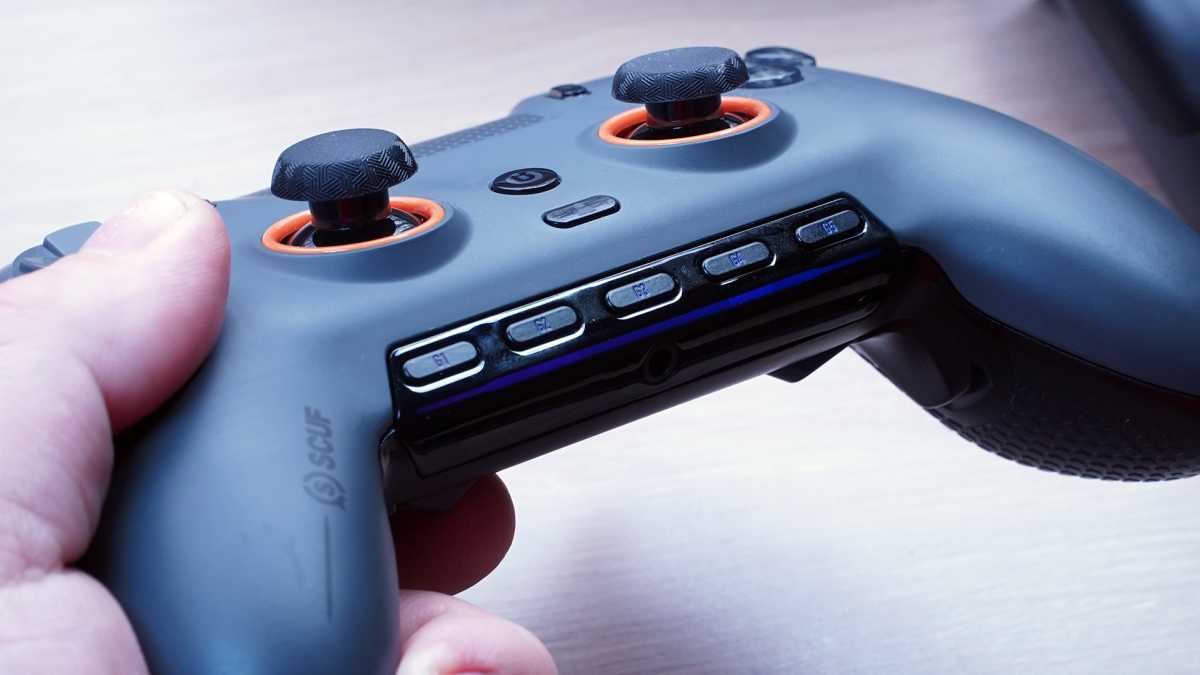
Michael Crider/Foundry
Michael Crider/Foundry
Michael Crider/Foundry
The G-buttons I found I could take or leave. They’re nice for quickly adjusting volume, but frankly it would be just as fast to reach down to my keyboard and make the same adjustment, where the functions are much easier with big keys. Maybe if you need even more input options, like a keyboard or mouse button within fast reach on your controller, you’ll find them more useful.
Customization options
Here’s everything you can change physically on the Envision Pro:
Trigger distance (technically on the fly, but very difficult) Block both side buttons and two out of the four rear paddles with blanks Swap between four thumbsticks in any of the two thumbstick positions
Technically you could also swap out the controller faceplate, as it’s only held in (quite snugly!) with magnets. But since there don’t appear to be any alternatives like Scuf makes for other controllers, there’s really no point. It only serves as a way to swap out those thumbsticks and keep them in place once installed. Oh, and despite kinda sorta looking like a PlayStation-style touchpad, that decorative hexagonal pattern is just that, decorative.
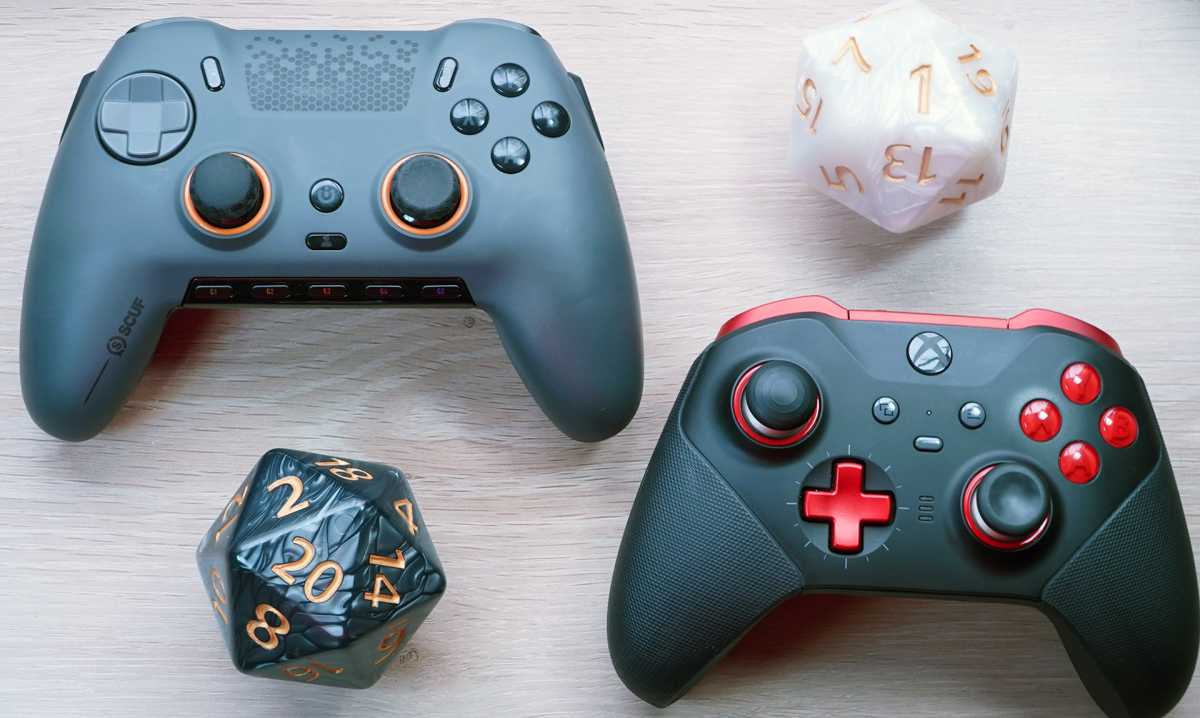
Michael Crider/Foundry
Michael Crider/Foundry
Michael Crider/Foundry
Corsair’s iCue software serves as a hub for its various sub-brands, and that’s now true for Scuf as well. Out of the box Corsair includes pre-made profiles for shooters, battle royale, racing, sports, action/adventure, and fighting, and of course, you can completely customize every single button on the controller and swap between profiles to your heart’s content.
Other customization options include lighting effects for the G buttons and light strip, custom sensitivity curves for the triggers and thumbsticks, and customization for the twin vibration motors. It’s odd that we’ve gotten to the point where these options are standard, but they are, indeed, pretty standard, and iCue’s interface is more than serviceable for changing whatever you need.

Corsair
Corsair
Corsair
It’s worth pointing out that the Envision Pro can be wired or wireless, but unlike recent Xbox and PlayStation pads, it only connects to its proprietary dongle. There’s no Bluetooth pairing option.
Is it worth it?
$180 is a lot for a controller in anybody’s money, and I say that as someone who’s spent that much on one myself. And speaking for myself, I’d probably stick with the Xbox Elite over the Scuf Envision Pro. The Xbox-style layout is better suited to my tastes, and I appreciate the heavier thumbsticks, swappable D-pad, and quick adjustment for the triggers. The included carrying case and Bluetooth options sure don’t hurt.
Xbox Elite Controller Series 2 Core
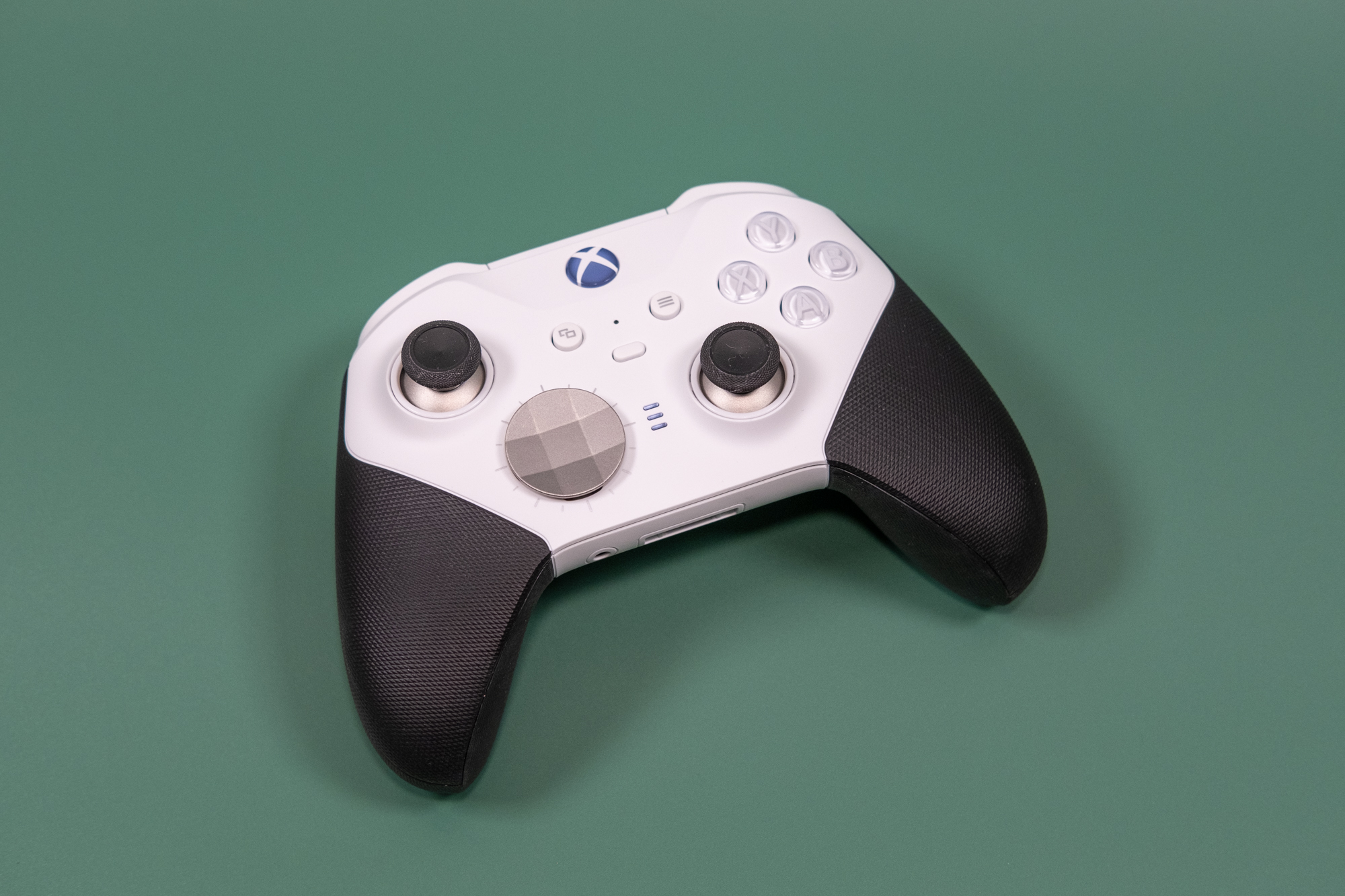 Read our reviewPrice When Reviewed:129.99Best Prices Today:$94.99 at GameStop | $107.99 at Walmart | $114.99 at Amazon
Read our reviewPrice When Reviewed:129.99Best Prices Today:$94.99 at GameStop | $107.99 at Walmart | $114.99 at Amazon
That being said, I think there’s a definite segment of the market that will gravitate towards the Envision Pro. Its face buttons and D-pad are undeniably faster and more responsive thanks to those clicky switches. That’s something I think fans of fighting games and other twitchy experiences will see as a huge plus, and they might also make better use out of the rear paddles and side buttons than I can.
So if money’s no object and you simply must have the fastest, most responsive premium pad for your PC gaming, the Envision Pro might be up your alley. Others are encouraged to stick to the Xbox pad, or something a little more economical. There are certainly plenty of choices for the latter.
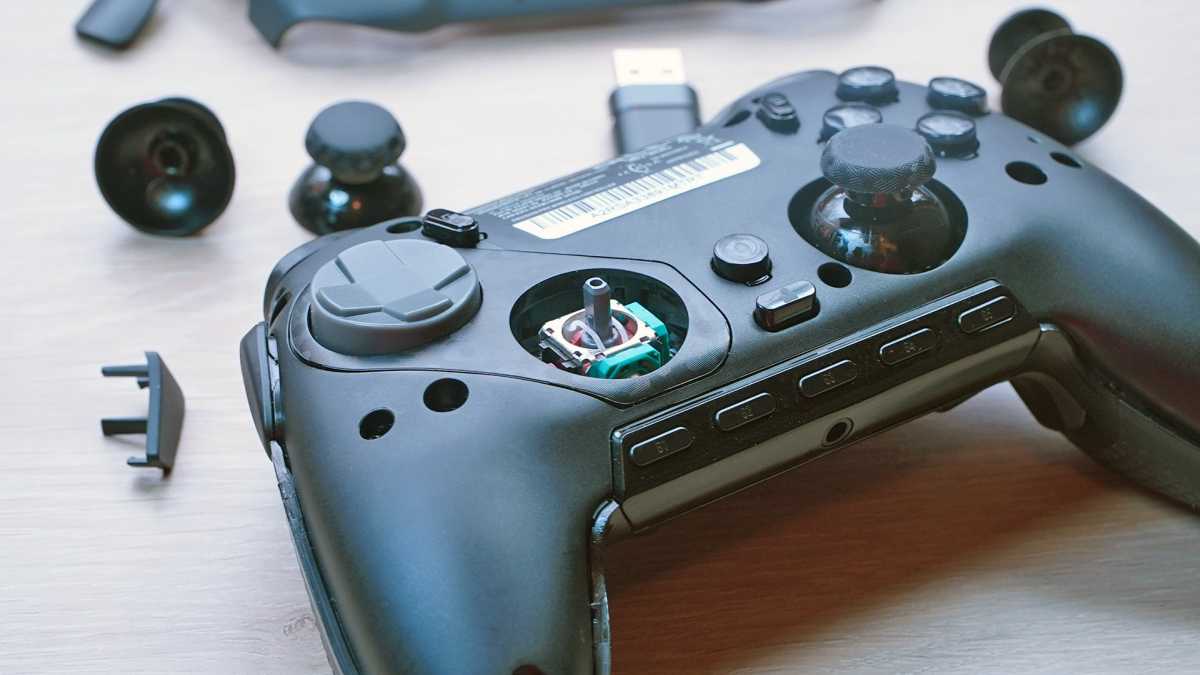
Michael Crider/Foundry
Michael Crider/Foundry
Michael Crider/Foundry
Best Prices Today: Scuf Envision Pro PC controller
RetailerPrice $179.99View DealCorsair Scuf$179.99View DealPrice comparison from over 24,000 stores worldwideProductPricePrice comparison from Backmarket
$179.99View DealCorsair Scuf$179.99View DealPrice comparison from over 24,000 stores worldwideProductPricePrice comparison from Backmarket
Author: Michael Crider, Staff Writer

Michael is a former graphic designer who’s been building and tweaking desktop computers for longer than he cares to admit. His interests include folk music, football, science fiction, and salsa verde, in no particular order.
Recent stories by Michael Crider:
This speedy 512GB MicroSD card is a steal at $30Elevate your desktop with this $22 VESA monitor armGigabyte’s 49-inch OLED gaming monitor hits its lowest price yet


